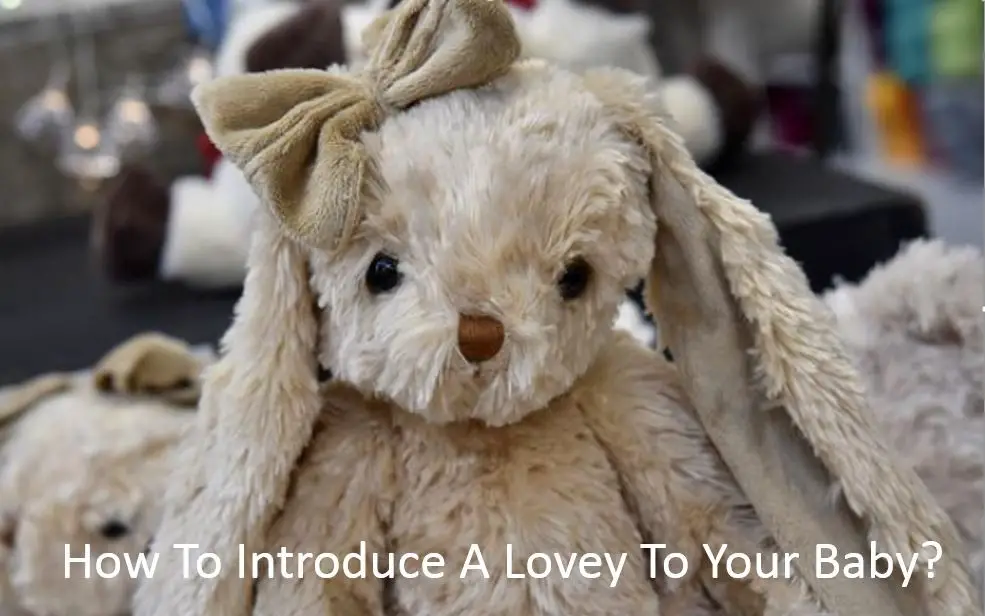How To Introduce A Lovey To Your Baby? (Simple Solution)

So, if you wonder how to introduce a lovey to your baby (a common name for a security object) then you already know what a great addition it can be to the family!
Not only in extreme situations, such as for easing separation anxiety, comforting when they are poorly, or during doctor’s visits.
However, most importantly, during daily naps and bedtime. Because lovey will help them fall back to sleep independently = without your intervention!
So, without further ado, let me tell you the simplest way to introduce a lovey in your baby’s life.
How To Introduce A Lovey To Your Baby?
Introducing a lovey to your baby is actually very simple. However, don’t get discouraged if your baby doesn’t love it right away. It is a process and might take a few days to develop a bond between the baby and the lovey. After selecting a perfectly safe and age-appropriate security object, make sure the lovey carries your scent, which is automatically comforting to your baby. Then, all you need to do is to ensure the new best friend of your baby is present in every activity of the day. This includes playtime, feeding, and during outings. And, most crucially, tuck your baby with the lovey for every nap and bedtime.
A Blankie or a Stuffed Animal?
First, figure out your baby’s preferences for their perfect lovey.
Perhaps, the perfect security object would be a blankie WITH a stuffed animal (or just an animal head) attached to it.
Such loveys are soft, cosy and easy to grasp for tiny hands. They are often made of soft, organic fabric, faux fur, velour or plush for extra soft snuggles.
The blanket attached to the animal is usually small – as it should be. Rather than covering your baby’s body and keeping them warm, the blanket is for snuggling, grasping, chewing, gnawing, and rubbing their faces! Therefore, the size should be like a napkin to prevent your baby from covering their face completely.
Of course, many options are available, so before you go crazy and buy loads of cute lovey, just pick one and see if it sticks around.
Be prepared that your baby may not fall in love with the new security object at first sight – it may take a few days for them to get used to it.
A Perfect Lovey Should Be Safe For Your Baby
One essential point to note is your little one’s safety.
According to the American Academy of Paediatrics (AAP), babies below 12 months cannot sleep with any objects in their cribs. That’s due to the risk of suffocation and SIDS.
This means that whilst it’s acceptable to introduce a lovey to younger babies, you should remove it from the crib once your baby drifts off.
Despite this rule, many parents, including me, decide to leave the lovey to babies younger than this, who can roll and move around the crib freely.
(That’s not to say to ignore the AAP recommendation. Just consider it and do what you think is best in your case).
Alternatively, if your baby is attracted to a soft toy over a blankie, make sure it doesn’t have buttons, beads or other pieces that can easily come off and pose a choking hazard.
And that it doesn’t make any squeaky or rattling noises. You may not find this helpful if your child wakes up in the middle of the night and tries to settle down…
Next Step: Building an Attachment
Once you have the perfect candidate for your baby’s soother, it’s time to build the bond between the baby and the lovey.
So, when your baby needs comforting, they will have their “friend” easily available to cuddle and provide them with the emotional support they need.
- Start by making the lovey smell like you. Because if a lovey smells like mommy, it instinctively will have a calming effect on your little one. You can do this by wearing the lovey under your top for a while.
- Then keep the lovey close to your baby during the day. Literally. For example,
- keep the lovey between you and baby during feeds;
- keep it next to the baby during story time or playtime;
- take it with you for walks and the frightening doctor’s visits;
- keep it close when strangers visit your home;
- or during transition time to the nursery.
- Don’t forget to keep lovey close for nap and bedtime. So tuck your baby with the lovey in their arms. This is particularly important if you want your little one to self-settle to sleep and fall asleep independently. Especially during midnight waking and during periods of sleep regression!
How to use Lovies with Babies
Final Few Lines
Introducing a lovey in your baby’s life is not as difficult as you may have imagined.
Just make sure it is always around and near your little one.
Perhaps it’s also worth having a backup lovey in case the original gets lost (God forbid!).
Lastly, a word of warning: once your baby’s lovey becomes a permanent part of your baby’s life, these two will become practically inseparable. Like a combo.
So make sure you pack it when you are travelling. Whenever your baby goes, so does the lovey.
